Home>Articles>This Stunning Farmhouse Makeover Is Loaded With Eco-Friendly Updates
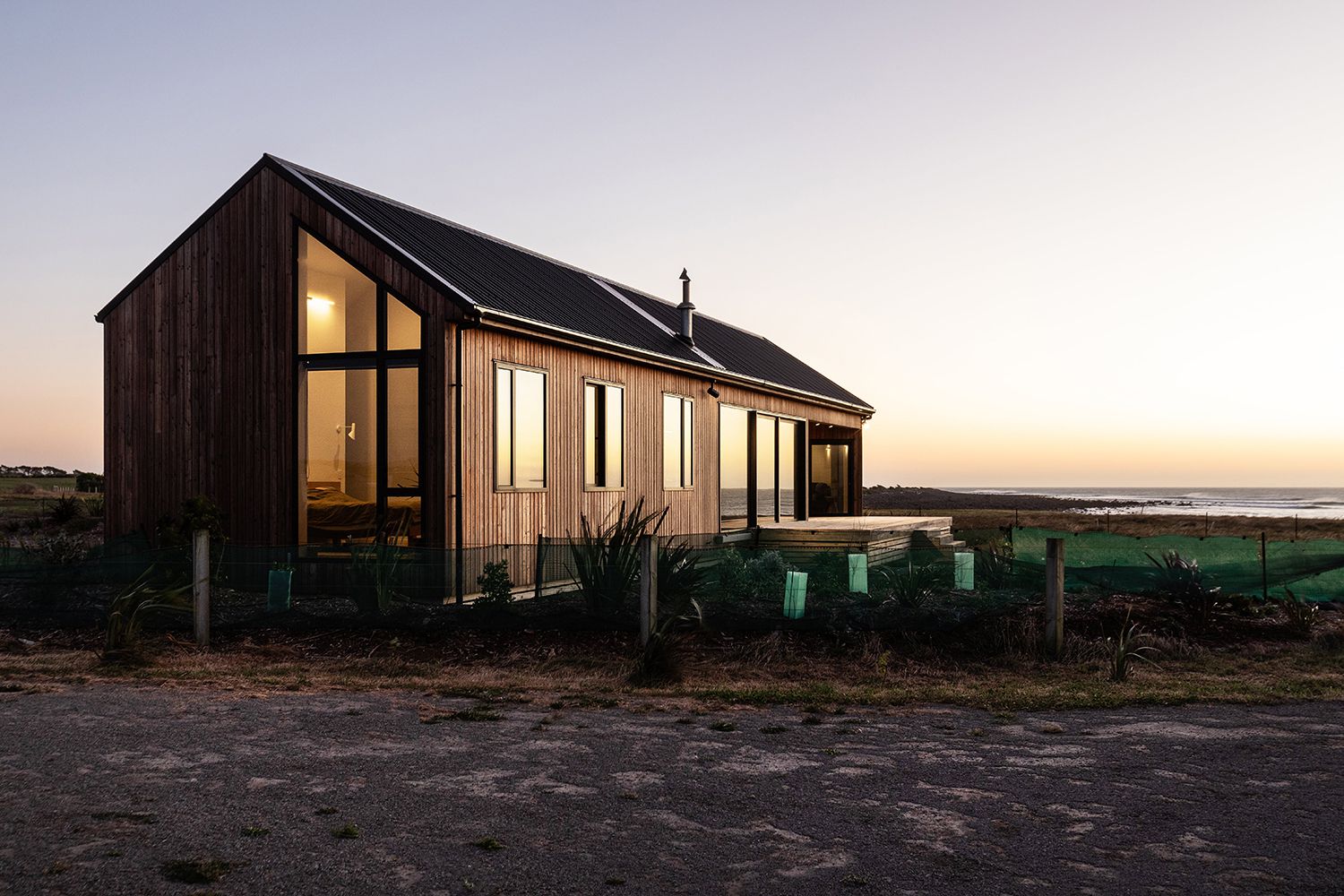

Articles
This Stunning Farmhouse Makeover Is Loaded With Eco-Friendly Updates
Modified: October 27, 2024
Discover the incredible transformation of this farmhouse, featuring a plethora of eco-friendly updates. Explore captivating articles on sustainable home renovation.
(Many of the links in this article redirect to a specific reviewed product. Your purchase of these products through affiliate links helps to generate commission for Storables.com, at no extra cost. Learn more)
Introduction
Welcome to the stunning farmhouse makeover that is about to take your breath away! This remarkable transformation goes beyond merely updating the aesthetics of a traditional farmhouse. It is a testament to the power of eco-friendly updates, showcasing how sustainability and style can perfectly blend together to create a truly remarkable home.
In today’s world, where environmental consciousness is on the rise, it has become essential for homeowners to consider the impact their living spaces have on the planet. With the farmhouse being a symbol of tradition and simplicity, it seemed fitting to embark on a journey to make this property an epitome of eco-friendliness.
The farmhouse makeover project aimed to incorporate various sustainable elements that not only enhance the overall look of the property but also reduce its carbon footprint. From exterior renovations to interior upgrades, every aspect of the farmhouse was carefully considered, ensuring that eco-friendliness was at the forefront of every decision.
By implementing these eco-friendly updates, the farmhouse now serves as an inspiring example for homeowners interested in embracing sustainability without compromising on style or comfort. Let’s take a closer look at some of the key changes that have been made to this farmhouse to create a truly eco-friendly haven.
Key Takeaways:
- Embracing eco-friendly updates in a farmhouse makeover can lead to stunning results, combining sustainability, style, and comfort for a truly remarkable living space.
- From energy-efficient windows to sustainable landscaping, the farmhouse makeover showcases how small changes can make a significant impact on creating a more eco-friendly and efficient home.
The Need for Eco-Friendly Updates
In today’s world, where environmental concerns are at the forefront, eco-friendly updates have become a necessity rather than a luxury. Traditional homes, including farmhouses, often have outdated systems that contribute to high energy consumption and wastage of resources. By incorporating eco-friendly updates, we not only reduce our carbon footprint but also save on utility bills in the long run.
The farmhouse in question was no exception. With energy-inefficient windows and doors, outdated appliances, and a lack of sustainable practices, the need for eco-friendly updates was evident. The objective was to transform this farmhouse into an environmentally conscious and sustainable living space.
By making these updates, the homeowners not only contribute towards a greener future but also benefit from improved energy efficiency, enhanced comfort, and increased property value. It’s a win-win situation for both the residents and the environment.
The transition to eco-friendly updates also aligns with a growing desire for healthier and safer living spaces. Conventional building materials and finishes can release harmful toxins into the air, impacting indoor air quality. By choosing non-toxic paints and finishes, the farmhouse becomes a healthier environment for its occupants.
Additionally, water conservation is a crucial aspect to consider. By incorporating water-saving features, such as rainwater harvesting systems and efficient plumbing fixtures, the farmhouse reduces its dependence on municipal water sources, conserving this precious resource for future generations.
Overall, the need for eco-friendly updates in this farmhouse stemmed from a desire to reduce environmental impact, create a healthier living space, and improve energy efficiency. Through these updates, the farmhouse has become a beacon of sustainable living, inspiring others to make similar changes in their homes.
Exterior Renovations
The exterior of the farmhouse underwent a remarkable transformation, incorporating eco-friendly elements that not only enhance its appearance but also contribute to its sustainability. From the roof to the landscaping, every aspect was carefully considered to minimize environmental impact and maximize energy efficiency.
One of the notable changes was the installation of energy-efficient windows and doors. The old, single-pane windows were replaced with double or triple-glazed windows, which provide better insulation and minimize heat loss or gain. These windows also feature Low-E coatings, which help reflect heat back into the room during the winter and reduce solar heat gain in the summer, resulting in reduced energy consumption for heating and cooling.
The farmhouse also embraced solar panel installation, taking advantage of the ample sunlight available on its spacious property. The roof was fitted with high-quality solar panels, harnessing the sun’s energy to generate clean and renewable electricity. This solar power not only helps reduce the farmhouse’s reliance on the grid but also lowers its carbon footprint, making it a more sustainable residence.
In addition to harnessing solar energy, the farmhouse implemented a rainwater harvesting system. The roof gutters were connected to a large rainwater collection tank, allowing rainwater to be collected and stored for various uses, such as watering the garden or flushing toilets. This system helps conserve water and reduces the demand for municipal water supply, which is energy-intensive to treat and distribute.
Sustainable landscaping also played a significant role in the exterior renovations. The farmhouse embraced native plants, which are adapted to the local climate and require less water and maintenance. These plants not only enhance the beauty of the property but also provide habitats for local wildlife. The use of organic fertilizers and mulch further reduces the need for harmful chemical-based pesticides and promotes a healthy ecosystem.
By incorporating these exterior renovations, the farmhouse has not only achieved an aesthetically pleasing appearance but has also significantly reduced its environmental impact. The energy-efficient windows and solar panels contribute to reduced energy consumption, while the rainwater harvesting system and sustainable landscaping promote water conservation and biodiversity. This farmhouse is now a showcase of how eco-friendly exterior renovations can enhance both the visual appeal and sustainability of a property.
Energy-Efficient Windows and Doors
When it comes to improving energy efficiency in a home, one of the most significant updates is the installation of energy-efficient windows and doors. In the farmhouse makeover project, upgrading the windows and doors played a crucial role in reducing energy consumption, increasing comfort, and enhancing the overall sustainability of the property.
The old, single-pane windows in the farmhouse were replaced with high-quality, energy-efficient windows. These new windows are typically double or triple-glazed, providing improved insulation by creating multiple layers of glass that trap air between them. The trapped air acts as an insulator, reducing heat transfer between the interior and exterior of the farmhouse.
Another feature of energy-efficient windows is the use of Low-E (low-emissivity) coatings. These thin, transparent layers of metallic oxide are applied to the glass to reflect thermal radiation. In simple terms, they help to keep heat inside during the winter and reflect heat outside during the summer, leading to reduced energy consumption for heating and cooling throughout the year.
In addition to the glass, the frames of energy-efficient windows are also designed for optimal insulation. Materials such as vinyl, fiberglass, or wood composites are commonly used, as they have low thermal conductivity and minimize heat loss or gain. These frames are also built to be airtight, preventing drafts and maintaining a consistent indoor temperature.
Similarly, energy-efficient doors were installed to complement the upgraded windows. These doors feature advanced insulation properties and airtight construction, ensuring minimal heat transfer and improved energy efficiency. They are often made with materials like fiberglass or insulated steel, which provide better thermal performance than traditional wooden doors.
The benefits of energy-efficient windows and doors are not limited to energy savings. Improved insulation leads to increased comfort inside the farmhouse, as drafts and cold spots are minimized. Furthermore, these windows and doors also help reduce noise transmission from the outside, creating a quieter living environment.
Overall, the installation of energy-efficient windows and doors in the farmhouse makeover project has not only resulted in reduced energy consumption and increased comfort but also contributed to the property’s sustainability goals. By reducing the reliance on heating and cooling systems, these windows and doors help lower the farmhouse’s carbon footprint and promote a more environmentally conscious approach to living.
Solar Panel Installation
No eco-friendly farmhouse makeover would be complete without harnessing the power of the sun through solar panel installation. In this renovation project, a key focus was on incorporating clean and renewable energy sources, and solar panels proved to be an ideal choice.
The farmhouse’s roof was the perfect location for the installation of solar panels, as it offered ample space and unobstructed access to sunlight. The panels were strategically positioned to maximize sun exposure throughout the day, ensuring optimal energy generation. The solar panels used in this project were made of high-quality materials that are designed to efficiently convert sunlight into electricity.
The solar panels installed on the farmhouse’s roof generate electricity through the photovoltaic effect. This process involves the conversion of sunlight into direct current (DC) electricity, which is then converted into alternating current (AC) electricity for use in the home. An inverter is used to facilitate this conversion, ensuring that the solar energy can be seamlessly integrated into the farmhouse’s electrical system.
By utilizing solar panels to generate electricity, the farmhouse reduces its reliance on traditional energy sources, such as fossil fuels. This not only helps to reduce carbon emissions but also contributes to a more sustainable and environmentally friendly energy mix. The solar panels produce clean energy, free from greenhouse gas emissions, making the farmhouse a greener and more eco-conscious home.
One of the significant advantages of solar panel installation is the potential for long-term cost savings. By generating their own electricity, the homeowners can significantly reduce their reliance on the grid and lower their monthly energy bills. The electricity generated from the solar panels can be used to power appliances, lighting, heating systems, and more, allowing for greater energy independence and financial savings over time.
In addition to the financial benefits, solar panel installation also increases the value of the farmhouse. In today’s real estate market, homes with renewable energy features are highly sought after. Potential buyers recognize the value of lower energy costs, sustainable living, and reduced environmental impact, making the farmhouse an attractive property for future resale.
Overall, the installation of solar panels in the farmhouse not only reduces carbon emissions and energy costs but also represents a commitment to sustainability. By harnessing the power of the sun, the farmhouse has become a clean energy producer, contributing to a greener future and inspiring others to embrace renewable energy solutions.
Rainwater Harvesting System
Water conservation is a critical aspect of any eco-friendly home, and the implementation of a rainwater harvesting system in the farmhouse makeover project played a vital role in achieving this goal. This system allows the farmhouse to take advantage of the natural resource of rainwater, reducing its reliance on municipal water sources and conserving water for various uses.
The first step in the rainwater harvesting system was the installation of a collection mechanism, typically in the form of a collection tank or cistern. This tank was strategically placed to capture rainwater from the roof gutters, directing it into a storage vessel for later use. The capacity of the tank was determined based on the rainfall patterns in the area and the intended usage of the harvested water.
The collected rainwater can be used for a variety of purposes within the farmhouse. One common application is in the irrigation of the surrounding landscape and gardens, reducing the need for municipal water. By using harvested rainwater for irrigation, the farmhouse ensures that its green spaces remain vibrant and healthy while minimizing water waste.
In addition to outdoor use, the harvested rainwater can also be used for non-potable indoor purposes. For instance, it can be used for flushing toilets or washing laundry. These applications contribute to significant water savings, as toilets and laundry account for a substantial portion of daily water consumption in a home.
A rainwater harvesting system not only reduces the demand for municipal water but also helps mitigate stormwater runoff. Instead of rainwater quickly flowing off the property and potentially causing erosion or overwhelming drainage systems, it is collected and stored for beneficial use. This helps to manage water resources effectively and prevents excessive strain on local water infrastructure.
Implementing a rainwater harvesting system in the farmhouse also has financial benefits. By reducing the reliance on municipal water, the homeowners can reduce their water bills significantly. Over time, the cost savings can be substantial, making the farmhouse more cost-effective to maintain.
Overall, the inclusion of a rainwater harvesting system in the farmhouse makeover project highlights the importance of water conservation. By capturing and using rainwater, the farmhouse minimizes its environmental impact, reduces water consumption, and promotes a more sustainable lifestyle. This system is a testament to how small changes can make a significant difference in creating a more eco-friendly home.
Sustainable Landscaping
As part of the farmhouse makeover project, sustainable landscaping practices were incorporated to enhance the beauty of the property while minimizing its environmental impact. Sustainable landscaping focuses on creating a harmonious and eco-friendly outdoor space that promotes biodiversity, conserves water, and reduces maintenance needs.
One of the key principles of sustainable landscaping is the use of native plants. Native plants are naturally adapted to the local climate, soil conditions, and wildlife, requiring less water, fertilizer, and pesticide use compared to non-native species. By incorporating native plants in the farmhouse landscape, the homeowners contribute to the preservation of local ecosystems and support the habitat for native wildlife.
In addition to native plants, sustainable landscaping often incorporates drought-tolerant species. These plants have adapted mechanisms to survive in arid conditions with minimal irrigation. By selecting drought-tolerant plants for the farmhouse landscape, water consumption is reduced, saving valuable resources and reducing the dependence on irrigation systems.
Another aspect of sustainable landscaping is the use of organic fertilizers and natural pest control methods. Traditional chemical-based fertilizers and pesticides can have adverse effects on soil health and the environment. By opting for organic fertilizers, compost, and natural pest control solutions, the farmhouse landscape remains healthy while minimizing the use of harmful chemicals.
Efficient irrigation systems are also a crucial element of sustainable landscaping. Drip irrigation or smart irrigation controllers can be installed to deliver water directly to the roots of plants, minimizing water waste through evaporation or runoff. Additionally, rain sensors or weather-based controllers can adjust irrigation schedules based on rainfall, further conserving water.
The layout of the landscape is designed to maximize the functionality and sustainability of the outdoor space. Functional elements such as permeable paving or gravel pathways help to reduce stormwater runoff and replenish groundwater. These permeable surfaces allow rainwater to infiltrate the soil, minimizing erosion and supporting healthy plant growth.
Sustainable landscaping also encourages the use of mulch to cover the soil around plants. Mulch helps retain moisture, suppresses weed growth, and regulates soil temperature. By using organic mulch materials such as wood chips or straw, the farmhouse landscape becomes healthier and more resilient.
Overall, sustainable landscaping in the farmhouse makeover project demonstrates a commitment to environmental responsibility and the creation of an eco-friendly outdoor space. By incorporating native plants, drought-tolerant species, organic practices, and efficient irrigation systems, the farmhouse landscape thrives while reducing water consumption and supporting biodiversity. This sustainable approach to landscaping serves as an inspiration for homeowners looking to create both beautiful and environmentally conscious outdoor spaces.
Consider using reclaimed or sustainable materials in your farmhouse makeover, such as reclaimed wood for flooring or eco-friendly paint options. These choices can reduce environmental impact and add unique character to your space.
Interior Upgrades
The interior of the farmhouse underwent a series of upgrades that not only enhance its aesthetic appeal but also contribute to its overall sustainability. From choosing eco-friendly materials to upgrading appliances and implementing energy-saving technologies, every aspect of the interior was carefully considered to create a more environmentally conscious living space.
One of the primary focuses of the interior upgrades was the selection of non-toxic paints and finishes. Conventional paints and finishes often contain volatile organic compounds (VOCs) that can release harmful gases into the air, contributing to poor indoor air quality. By opting for paint and finishes with low or zero VOC content, the farmhouse promotes a healthier environment for its occupants.
In addition to non-toxic paints and finishes, energy-efficient appliances were installed throughout the farmhouse. Appliances such as refrigerators, washing machines, dishwashers, and HVAC systems were selected with high energy efficiency ratings. These appliances consume less energy while providing the same functionality, reducing both energy bills and the carbon footprint of the farmhouse.
Lighting also received attention in the interior upgrades. Traditional incandescent bulbs were replaced with energy-efficient LED (light-emitting diode) bulbs. LED lighting not only consumes significantly less energy but also has a longer lifespan compared to incandescent bulbs. This helps reduce electricity usage and the frequency of bulb replacements, lowering maintenance costs and reducing waste.
Flooring options were carefully chosen to prioritize sustainability. Materials such as bamboo, cork, or reclaimed wood were selected for their eco-friendly properties. These materials are renewable, as bamboo and cork can be harvested without killing the plant, and reclaimed wood gives new life to existing resources. By opting for sustainable flooring options, the farmhouse reduces its environmental impact while creating a visually appealing and durable interior.
Water conservation was another important aspect of the interior upgrades. Low-flow plumbing fixtures, such as efficient toilets, faucets, and showerheads, were installed to reduce water consumption without compromising functionality. These fixtures deliver the same performance while using significantly less water, promoting water conservation within the farmhouse.
Throughout the interior upgrades, the farmhouse maintained a focus on functionality, aesthetics, and sustainability. By choosing non-toxic paints and finishes, energy-efficient appliances, LED lighting, sustainable flooring, and water-saving fixtures, the farmhouse has become a more environmentally conscious and comfortable home for its occupants.
Overall, the interior upgrades showcase how sustainable choices can be seamlessly integrated into a farmhouse’s design, resulting in a space that is visually pleasing, efficient, and environmentally friendly. The farmhouse serves as an example of how small changes in the interior can make a significant impact on the overall sustainability of a home.
Non-Toxic Paint and Finishes
Non-toxic paint and finishes were a crucial element of the interior upgrades in the farmhouse makeover project. Traditional paints and finishes often contain volatile organic compounds (VOCs), which can emit harmful gases into the air, leading to poor indoor air quality. By opting for non-toxic alternatives, the farmhouse ensured a healthier living environment for its inhabitants.
Non-toxic paint options are typically labeled as low or zero VOC. These paints are made without the use of harmful chemicals that can off-gas over time. By selecting low or zero VOC paint, the farmhouse significantly reduces the presence of airborne pollutants, making the indoor air cleaner and safer to breathe.
One of the primary advantages of non-toxic paint is its impact on human health. Traditional paints containing VOCs have been associated with a range of health issues, including respiratory problems, allergies, and even certain cancers. By choosing non-toxic paint, the farmhouse creates a safer environment, particularly important for those with allergies, sensitivities, or respiratory conditions.
In addition to benefiting human health, non-toxic paint also has a positive impact on the environment. VOCs released from traditional paints contribute to air pollution, including the formation of smog. By opting for low or zero VOC paint, the farmhouse reduces its carbon footprint and helps improve outdoor air quality.
Non-toxic finishes are also an essential component of the interior upgrades. In contrast to traditional varnishes and sealants, non-toxic finishes are made from natural or environmentally friendly materials. These finishes are free from harmful chemicals and synthetic substances, providing a more eco-conscious option for coating surfaces.
One popular non-toxic finishing option is natural oils, such as linseed oil or tung oil. These oils are derived from plant sources and do not release toxic fumes during application or over time. They provide a durable and protective finish to wood surfaces, enhancing their natural beauty without compromising indoor air quality.
Another non-toxic finish commonly used in eco-friendly interior design is water-based polyurethane. Unlike traditional solvent-based polyurethane, water-based formulations have reduced VOC content and emit fewer harmful fumes. They provide a clear and durable finish to various surfaces, such as floors, furniture, or cabinetry.
The choice of non-toxic paint and finishes in the farmhouse makeover project emphasizes the importance of creating a healthier and more sustainable living environment. By selecting low or zero VOC paints and natural or water-based finishes, the farmhouse interior promotes cleaner indoor air quality, reduces environmental impact, and supports the well-being of its occupants. It is a testament to the idea that beauty and sustainability can go hand in hand in creating a truly remarkable living space.
Read more: How To Create A Stunning TV Fireplace Setup
Energy-Efficient Appliances
The farmhouse makeover project placed a strong emphasis on energy efficiency, and one of the key aspects of achieving this goal was the installation of energy-efficient appliances. Upgrading to these appliances not only reduces energy consumption but also contributes to cost savings and environmental sustainability.
The primary focus was on replacing outdated appliances with modern, energy-efficient models. The farmhouse’s kitchen received a complete makeover with the installation of energy-efficient refrigerators, dishwashers, ovens, and cooktops. These appliances are designed to consume less energy while providing the same functionality and performance as their conventional counterparts.
One of the most significant benefits of energy-efficient appliances is the reduction in energy consumption. They are specially designed to use electrical power more efficiently, minimizing wasted energy and lowering electricity bills. The energy savings can be substantial over time, especially in a household where appliances are frequently used.
Energy-efficient refrigerators, for example, feature advanced insulation and better temperature control, reducing energy loss and optimizing cooling efficiency. This results in lower energy consumption and less strain on the electrical grid. Similarly, energy-efficient dishwashers utilize innovative water and energy-saving technologies, such as sensor-based controls and efficient water circulation, to clean dishes while minimizing water and electricity usage.
Efficiency is also a key characteristic of energy-efficient ovens and cooktops. These appliances utilize innovative heating elements, improved insulation, and precise temperature controls to minimize energy waste and shorten cooking times. This not only saves energy but also improves cooking efficiency and enhances the overall cooking experience in the farmhouse.
Another advantage of energy-efficient appliances is their positive impact on the environment. By reducing energy consumption, these appliances contribute to a decrease in greenhouse gas emissions. The lowered energy demand helps to mitigate the environmental impact associated with conventional energy production, supporting a more sustainable future.
Additionally, energy-efficient appliances often come with energy efficiency labels, such as ENERGY STAR certification. These labels indicate that the appliances meet or exceed strict energy efficiency standards set by regulatory agencies. By choosing ENERGY STAR certified products, the farmhouse ensures that the appliances it uses are among the most energy-efficient options available.
Overall, the installation of energy-efficient appliances in the farmhouse not only reduces energy consumption and lowers utility bills but also aligns with the farmhouse’s sustainability goals. These appliances contribute to a greener and more eco-conscious lifestyle, illustrating the integration of modern technology and environmental responsibility to create a more energy-efficient and sustainable living space.
LED Lighting Installation
In the quest for energy efficiency and sustainability, one of the key interior upgrades made in the farmhouse was the installation of LED (light-emitting diode) lighting. LED lighting offers numerous benefits over traditional incandescent or fluorescent bulbs, making it an ideal choice for maximizing energy efficiency and reducing environmental impact.
LED lighting is highly energy-efficient, consuming significantly less energy compared to traditional lighting options. LEDs convert a greater percentage of energy into light rather than heat, resulting in less wasted energy. This improved efficiency translates into lower electricity bills and reduced energy consumption, making LED lighting a cost-effective and environmentally friendly choice for the farmhouse.
LED bulbs also have an exceptionally long lifespan, significantly outlasting traditional bulbs. While incandescent bulbs typically last around 1,000 hours and compact fluorescent bulbs last about 10,000 hours, LED bulbs can last up to 50,000 hours or even longer. This longevity greatly reduces the frequency of bulb replacements, decreasing waste and the associated environmental impact.
The use of LED lighting also contributes to a more sustainable lifestyle due to its reduced environmental footprint. LED bulbs do not contain hazardous substances like mercury, which is present in some other types of lighting, such as fluorescent bulbs. This means that LED lighting is easier to recycle and dispose of, minimizing potential harm to the environment.
In addition to their superior energy efficiency and sustainability, LED bulbs offer a range of other advantages. LED lighting is known for its instant start-up, reaching full brightness immediately upon turning on. This eliminates the annoying warm-up period associated with other types of bulbs. LED bulbs also provide excellent color rendering, offering clear, vibrant, and natural lighting that enhances the farmhouse’s interior design and ambiance.
Furthermore, LED lighting provides versatility in terms of design options. LED bulbs are available in various sizes, shapes, and color temperatures, allowing for customization to suit different areas and purposes within the farmhouse. From warm white for cozy living spaces to cool white for work areas, LED lighting offers flexibility and versatility in creating the desired atmosphere.
The installation of LED lighting in the farmhouse demonstrates a commitment to energy efficiency and sustainable living. By adopting this technology, the farmhouse reduces energy consumption, lowers electricity bills, and minimizes the environmental impact associated with lighting. LED lighting is a shining example of how small changes in lighting choices can make a significant difference in creating a more eco-friendly and efficient living space.
Eco-Friendly Flooring Options
When it comes to creating an eco-friendly interior space, the choice of flooring plays a crucial role. In the farmhouse makeover project, careful consideration was given to selecting sustainable and eco-friendly flooring options. These flooring materials not only contribute to a healthier environment but also add style and durability to the farmhouse.
Bamboo flooring was chosen as a sustainable alternative to traditional hardwood. Bamboo is a fast-growing grass that can be harvested without killing the plant, making it a highly renewable material. It is also known for its strength and durability, comparable to hardwood flooring options. By opting for bamboo flooring, the farmhouse reduces its impact on natural forests and promotes sustainable material choices.
Cork flooring is another eco-friendly option that was considered for the farmhouse. Cork is harvested from the bark of cork oak trees, allowing the trees to continue growing and regenerate. The harvesting process is sustainable, as the bark can be harvested every few years throughout the tree’s lifespan. Cork flooring is comfortable to walk on, provides good insulation, and is resistant to mold and mildew, making it an excellent choice for the farmhouse.
Reclaimed wood flooring was also incorporated into the interior upgrades. Reclaimed wood comes from salvaged sources such as old barns, factories, or warehouses. By repurposing this wood, the farmhouse not only adds character and warmth to its interior but also reduces the demand for newly harvested trees. Reclaimed wood flooring is highly sought after for its unique, weathered aesthetic and environmental sustainability.
Linoleum flooring, made from natural materials like linseed oil, cork powder, and wood flour, is another eco-friendly option that was considered for the farmhouse. Linoleum is biodegradable, recyclable, and free from synthetic materials, making it a healthier choice for indoor air quality. It is durable and comes in a variety of colors and patterns, allowing for creative expression in the farmhouse’s design.
Concrete flooring with a polished finish was also explored as an eco-friendly choice for the farmhouse. Concrete is a versatile and durable material that can be sourced locally, reducing the carbon footprint associated with long transportation distances. Additionally, polished concrete is highly reflective, enhancing natural lighting and reducing the need for artificial lighting during the day, further promoting energy efficiency.
Eco-friendly carpet options were selected, specifically those made from natural fibers such as sisal, jute, or wool. These natural fiber carpets are free from synthetic materials and harmful chemicals, contributing to improved indoor air quality. Furthermore, natural fiber carpets are biodegradable and can easily be recycled, minimizing waste and environmental impact.
The farmhouse’s choice of eco-friendly flooring options highlights the importance of sustainability and responsible material selection. By opting for bamboo, cork, reclaimed wood, linoleum, concrete, and natural fiber carpets, the farmhouse creates a visually appealing and environmentally conscious interior. These flooring choices result in a healthier living space, reduced impact on natural resources, and a positive contribution to a more sustainable future.
Water Conservation Improvements
Water conservation is a vital aspect of sustainability, and the farmhouse makeover project made significant improvements to reduce water consumption and promote responsible water usage. By implementing various water conservation strategies, the farmhouse not only minimizes its impact on local water resources but also reduces water bills and contributes to a more sustainable lifestyle.
One of the key water conservation improvements made was the installation of low-flow plumbing fixtures throughout the farmhouse. Low-flow fixtures, such as toilets, faucets, and showerheads, are designed to reduce water flow while maintaining adequate performance. These fixtures conserve water by limiting the amount of water used without compromising on functionality or comfort.
For example, low-flow toilets use less water per flush compared to conventional toilets, resulting in significant water savings over time. Low-flow faucets and showerheads feature aerators that mix air with water, reducing the volume of water used without sacrificing water pressure or the overall showering experience. These small adjustments add up and significantly reduce water consumption in the farmhouse.
The farmhouse also implemented a greywater recycling system to further optimize water usage. Greywater refers to wastewater generated from activities like handwashing, laundry, or dishwashing that is not contaminated with sewage. This water can be treated and reused for non-potable purposes, such as toilet flushing or garden irrigation.
The greywater recycling system collects and filters the greywater, making it suitable for reuse. By diverting water from these sources, the farmhouse reduces the demand for freshwater and conserves this precious resource. Greywater recycling is an effective way to reduce overall water consumption and promote a more sustainable approach to water usage.
In addition to indoor water conservation, the farmhouse also improved its outdoor water management. This was achieved through the installation of a smart irrigation system that utilizes weather data and sensors to optimize watering schedules. The system adjusts irrigation based on factors such as rainfall, temperature, and soil moisture, ensuring that water is used efficiently and only when necessary.
The farmhouse also embraced xeriscaping, a landscaping technique that focuses on using drought-tolerant plants and minimizing water-intensive grassy areas. By selecting native and drought-resistant plants in the landscaping design, the farmhouse reduces the need for excessive irrigation and promotes water conservation in outdoor spaces.
Overall, the water conservation improvements implemented in the farmhouse makeover project demonstrate a commitment to responsible water usage and sustainability. The use of low-flow fixtures, greywater recycling, smart irrigation systems, and xeriscaping all contribute to reducing water waste and preserving this precious resource. The farmhouse serves as an example of how small changes in water management practices can have a significant impact on creating a more water-efficient and sustainable living environment.
Read more: How Many Dryer Balls Per Load
Conclusion
The stunning farmhouse makeover exemplifies the power of eco-friendly updates to create a beautiful, sustainable, and comfortable living space. From the exterior renovations to the interior upgrades, every aspect of the farmhouse was carefully considered to minimize environmental impact and maximize energy efficiency.
Through energy-efficient windows and doors, the farmhouse reduced heat transfer and improved insulation, resulting in lower heating and cooling costs. The installation of solar panels allowed the farmhouse to harness the power of the sun, generating clean and renewable energy and reducing reliance on the grid. A rainwater harvesting system reduced dependence on municipal water sources, conserving water for irrigation purposes and minimizing strain on the local water supply.
Sustainable landscaping practices, such as using native plants and implementing water-efficient irrigation systems, not only enhanced the aesthetics of the farmhouse but also promoted biodiversity and reduced water waste. Interior upgrades included non-toxic paints and finishes, energy-efficient appliances, LED lighting, and eco-friendly flooring options, all contributing to a healthier and more sustainable living environment.
The farmhouse makeover not only minimized its environmental impact but also increased energy efficiency, improved indoor air quality, and reduced water consumption. These upgrades not only benefit the homeowners in terms of cost savings but also contribute to a greener future by lowering carbon emissions and promoting sustainable living practices.
The farmhouse serves as an inspiring example for homeowners interested in embracing eco-friendly updates. By showcasing that sustainability and style can go hand in hand, it encourages others to make similar changes in their homes. With each sustainable choice made, we move closer to a more environmentally conscious society, acknowledging our responsibility to protect the planet for future generations.
In conclusion, the farmhouse makeover project demonstrates that through thoughtful design and intentional choices, it is possible to create a home that is not only visually stunning but also environmentally friendly. By incorporating eco-friendly updates throughout the property, the farmhouse showcases the potential to combine sustainability, functionality, and style, paving the way for a more sustainable future in the realm of interior design and homeownership.
Frequently Asked Questions about This Stunning Farmhouse Makeover Is Loaded With Eco-Friendly Updates
Was this page helpful?
At Storables.com, we guarantee accurate and reliable information. Our content, validated by Expert Board Contributors, is crafted following stringent Editorial Policies. We're committed to providing you with well-researched, expert-backed insights for all your informational needs.
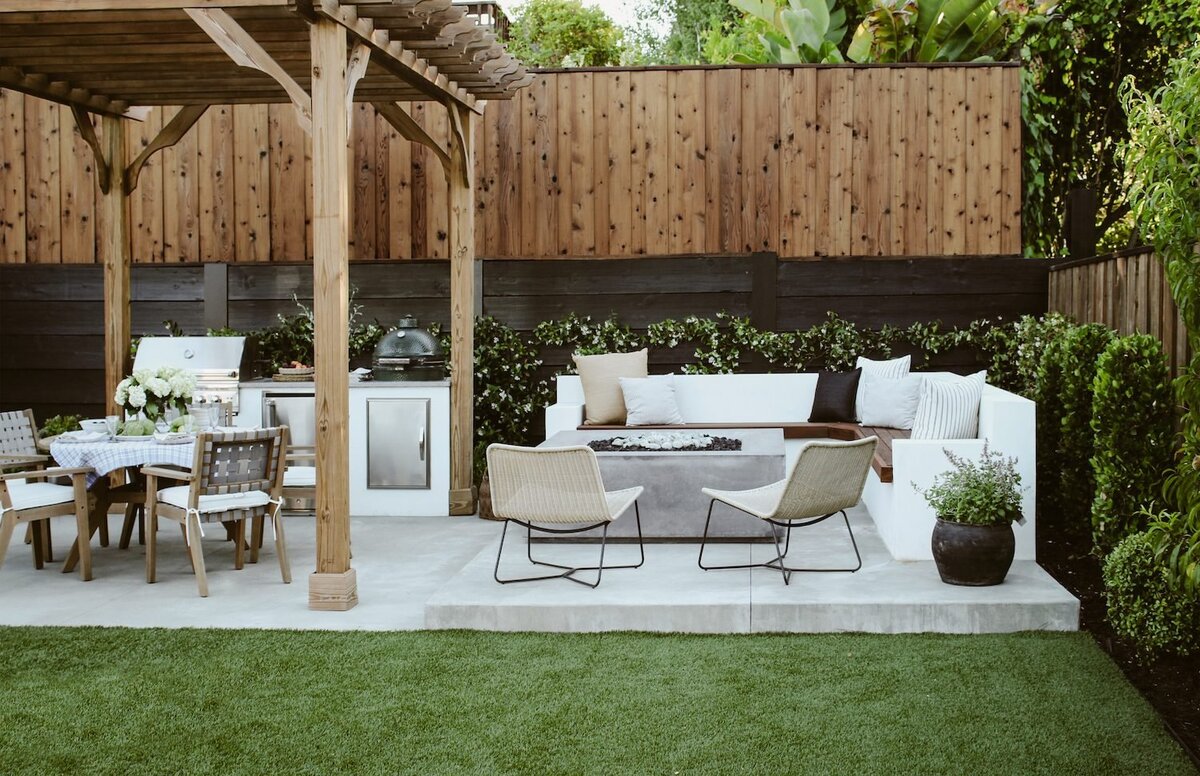


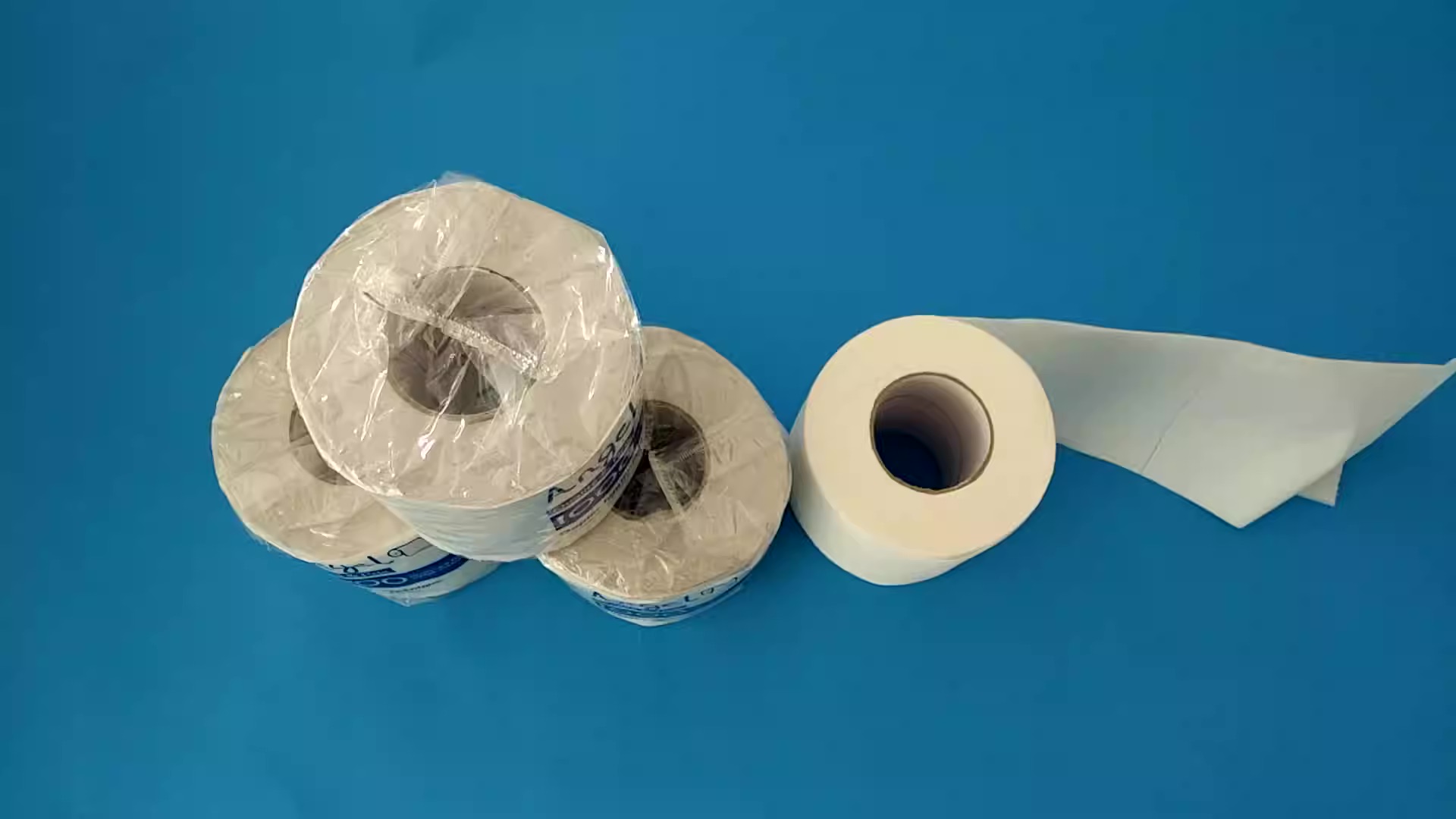

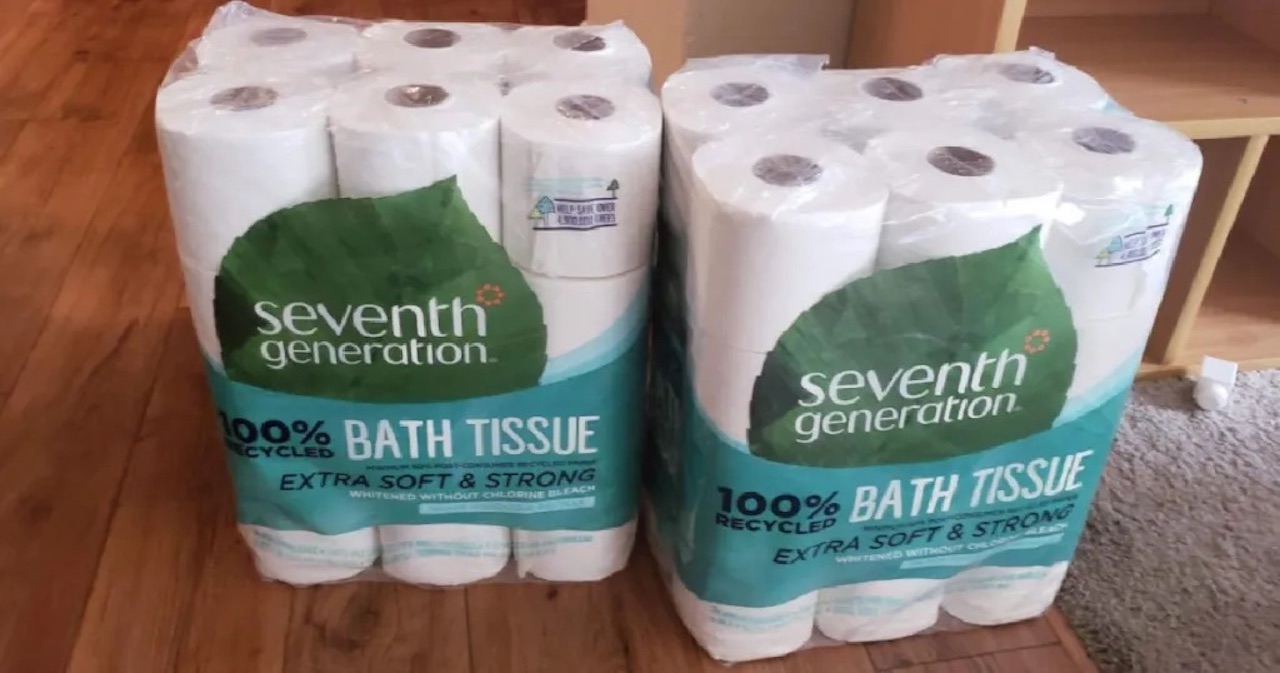


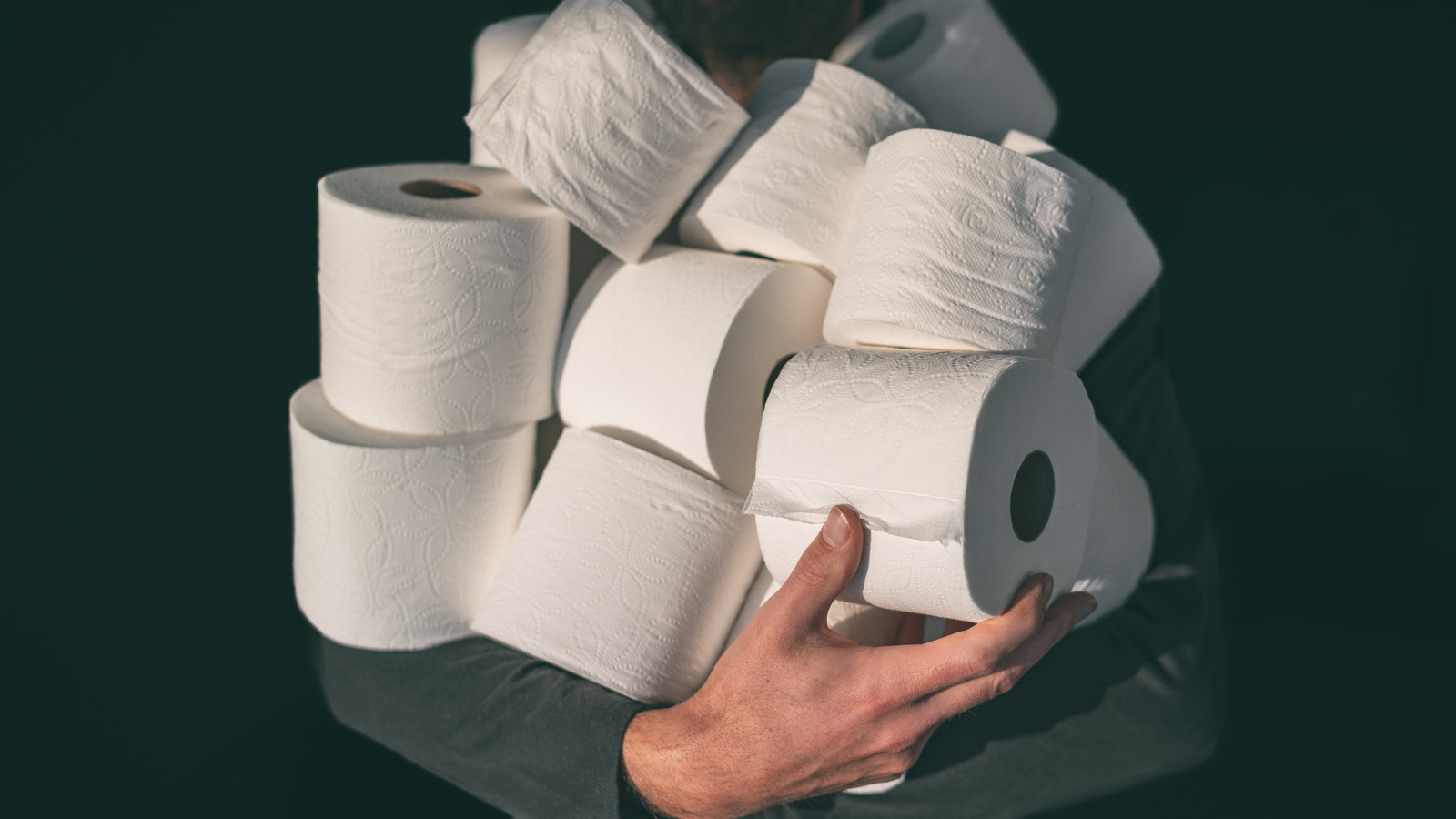
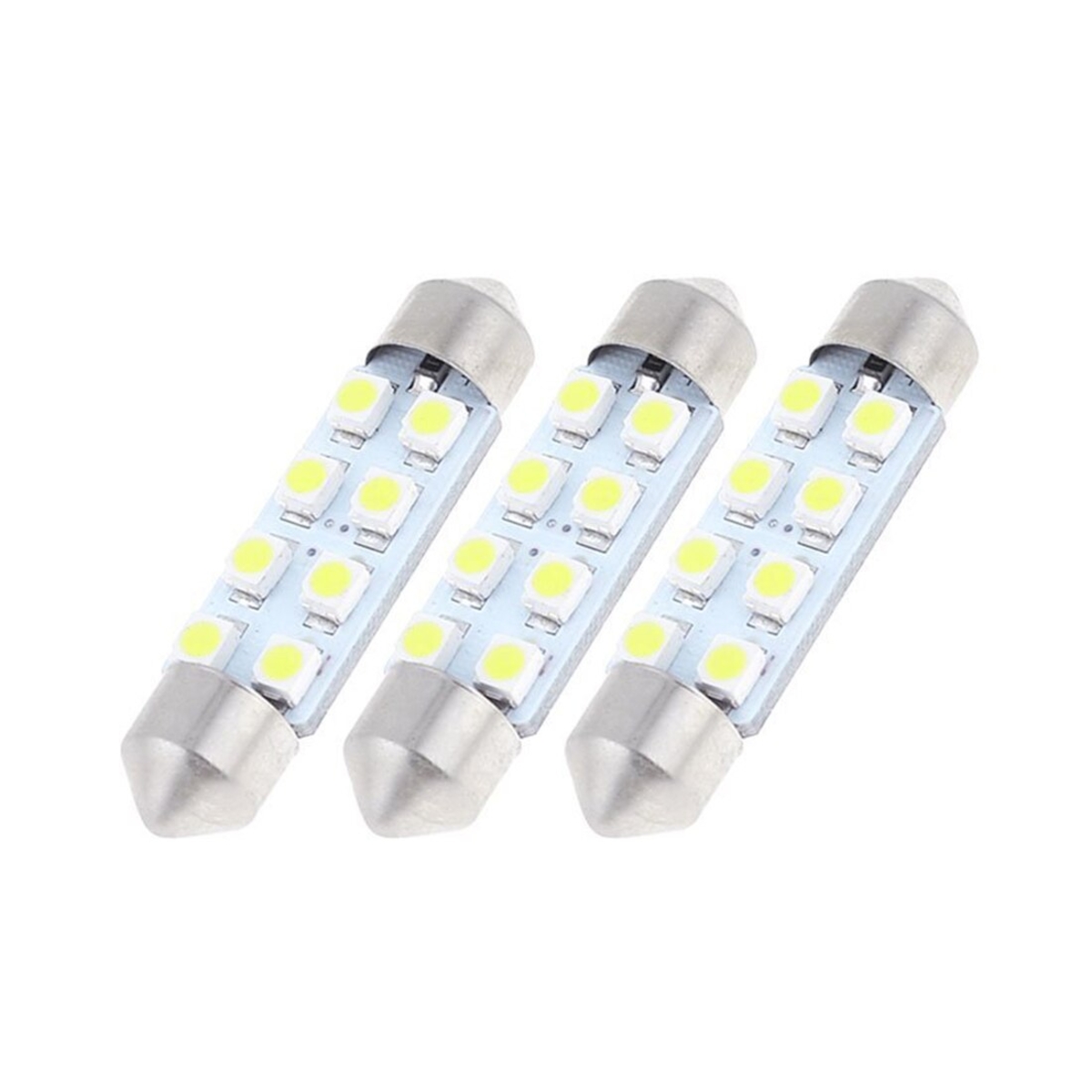
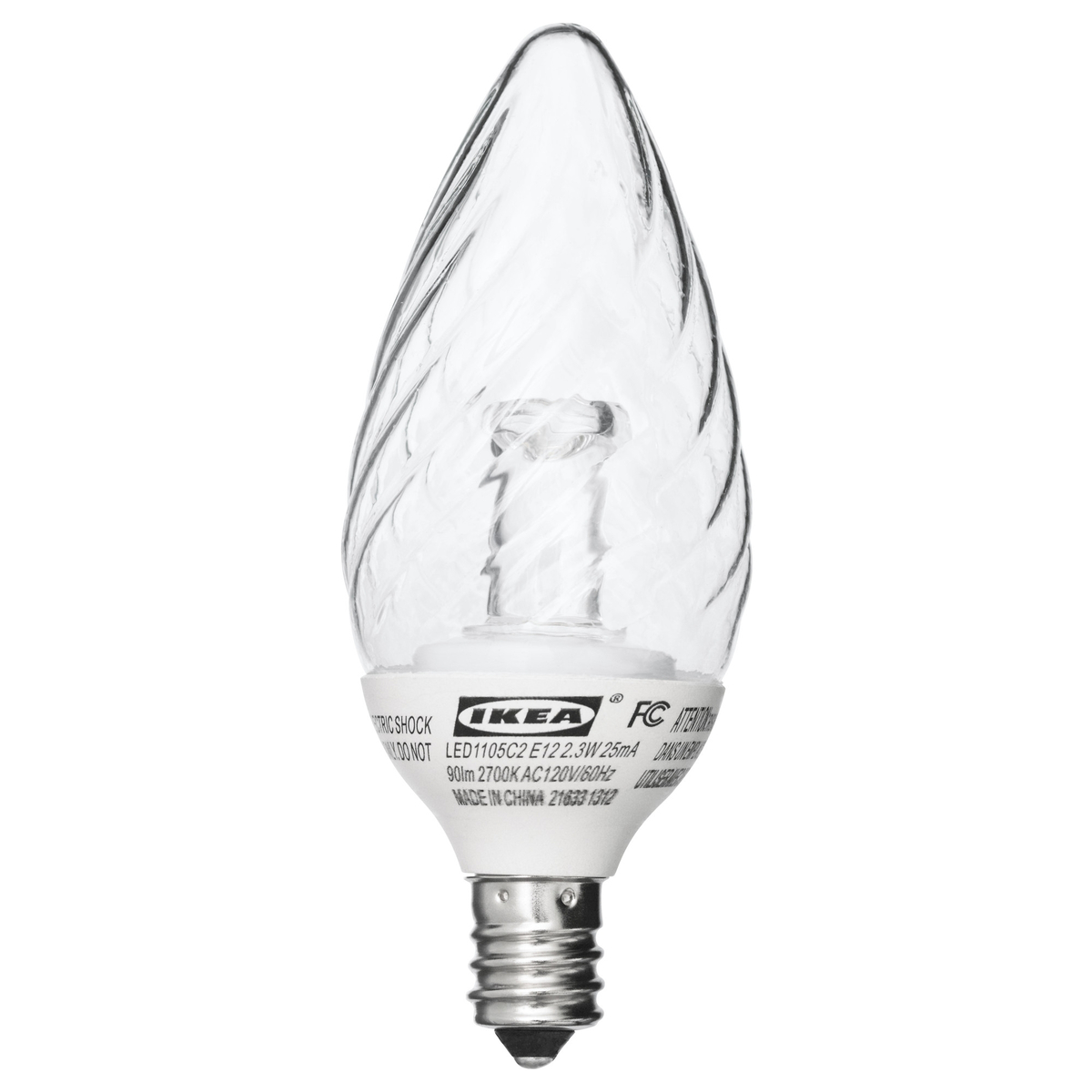
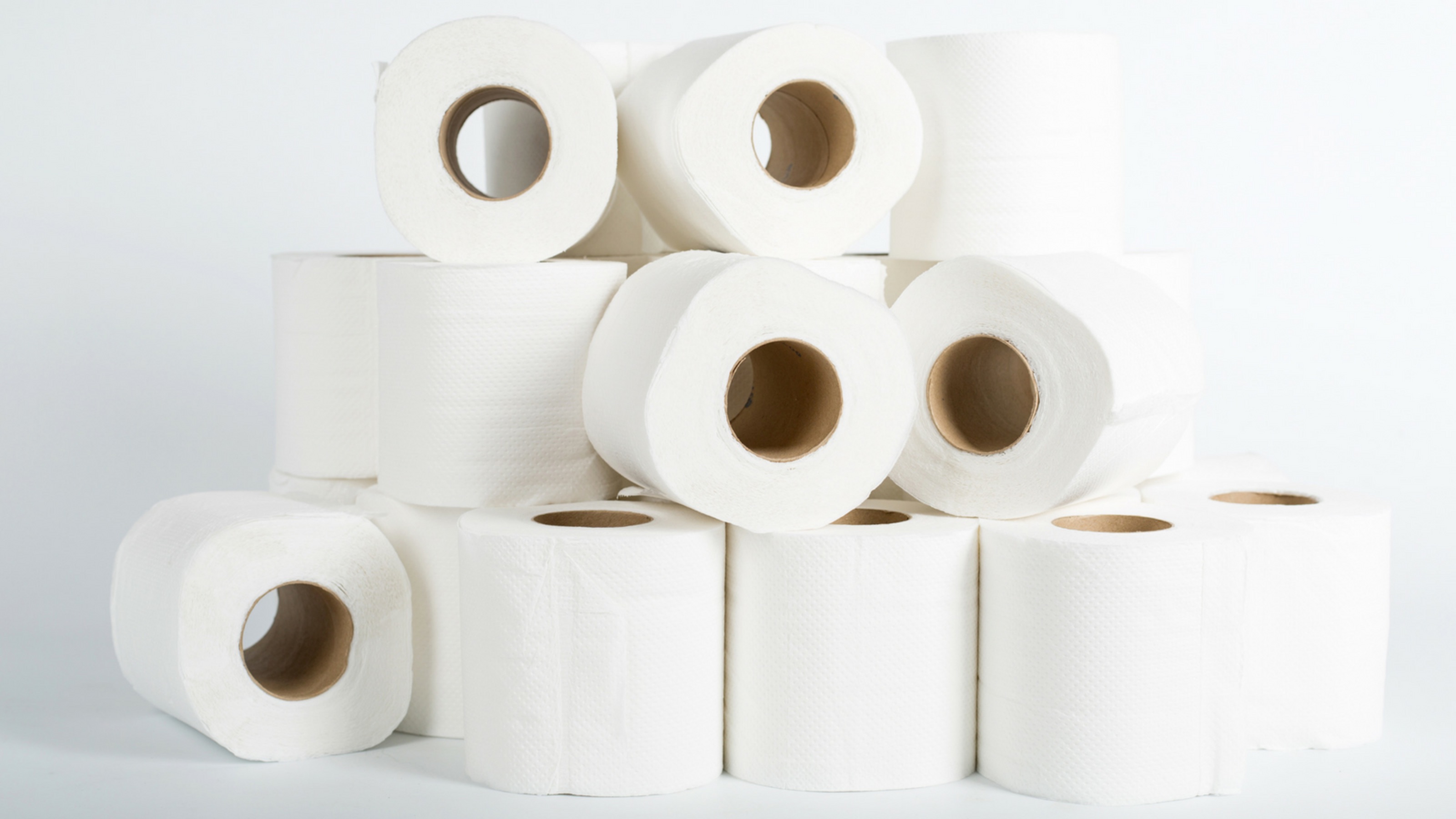

0 thoughts on “This Stunning Farmhouse Makeover Is Loaded With Eco-Friendly Updates”